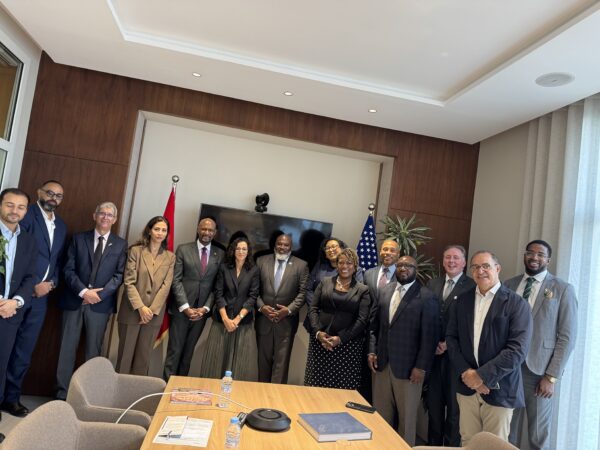For competitive companies, aligning workforce planning and development with organizational change is not just a best practice—it’s a business imperative. Whether an organization is scaling up to meet increased demand, navigating a strategic pivot, or responding to external disruptions, the ability to adapt your workforce in lockstep with your goals can determine long-term sustainability and success.
This article explores how effective workforce planning and development strategies help businesses stay agile, competitive, and prepared for whatever lies ahead.
What Is Workforce Planning and Development?
At its core, workforce planning and development is a strategic process that ensures an organization has the right people, with the right skills, in the right roles—both now and in the future. It involves:
-
Analyzing current workforce capabilities
-
Forecasting future talent needs
-
Identifying skill gaps
-
Implementing targeted recruitment, training, and retention strategies
This proactive approach allows businesses to build resilient talent pipelines, manage costs more effectively, and align human resources with organizational priorities.
Workforce Planning in a Growth Environment
When companies are in growth mode—whether expanding geographically, launching new services, or scaling operations—workforce planning is critical. Without it, rapid expansion can lead to misalignment, burnout, or critical skill shortages.
Key strategies during expansion include:
-
Strategic hiring plans aligned with business goals and timelines
-
Upskilling and reskilling programs to prepare existing staff for new responsibilities
-
Succession planning to build leadership pipelines and reduce reliance on external hires
-
Scenario modeling to plan for multiple growth paths and adjust workforce needs accordingly
Organizations that approach growth without a workforce strategy often encounter delays, increased turnover, and difficulty sustaining momentum. A thoughtful, scalable workforce development plan turns expansion into a controlled, confident process.
Managing Workforce Planning During Downsizing or Restructuring
On the flip side, workforce planning and development are just as vital during periods of contraction or strategic realignment. Downsizing initiatives—while sometimes necessary—can damage morale, productivity, and reputation if mishandled.
To navigate workforce reductions responsibly, organizations should:
-
Conduct role and skills audits to identify essential functions and competencies
-
Offer reskilling or redeployment opportunities within the organization
-
Provide outplacement services to support impacted employees
-
Engage in transparent, empathetic communication with staff
-
Realign remaining teams through cross-training and support
Strategic planning during downsizing ensures organizations retain their critical capabilities, maintain productivity, and safeguard culture—while helping employees transition with dignity.
The Power of Continuous Development and Agile Talent
Modern workforce development goes beyond reacting to immediate needs. Today’s most successful companies invest in continuous learning and agile workforce models that allow them to pivot quickly in response to market shifts.
Best practices include:
-
Learning & Development (L&D) programs tied to business strategy
-
Digital skills training for evolving technologies and platforms
-
Cross-functional training to create adaptable teams
-
Internal mobility initiatives that encourage career growth from within
This kind of ongoing investment builds a culture of agility, where employees are not only more skilled but more engaged, innovative, and aligned with the company’s future.
Technology’s Role in Workforce Planning and Development
Technology is a force multiplier in effective workforce planning. Data-driven tools allow companies to:
-
Track workforce trends and demographics
-
Predict turnover and hiring needs
-
Visualize skills gaps and training ROI
-
Automate and personalize employee learning journeys
From AI-driven talent analytics to cloud-based LMS platforms, modern tools empower HR and leadership teams to make smarter, faster decisions about workforce strategy.
Measuring the ROI of Workforce Planning
The benefits of effective workforce planning and development are measurable and impactful. Organizations that invest in this area typically see:
-
Reduced turnover and recruitment costs
-
Higher employee engagement and retention
-
Better performance and productivity
-
Increased adaptability in times of change
-
Stronger alignment between talent strategy and business outcomes
In the long term, it’s not just about having the right people—it’s about building an organization that is resilient, forward-looking, and ready to lead.
Need Expert Support? PMCS Can Help.
While this article offers a solid foundation, building and executing a robust workforce planning strategy can be complex. At PMCS, we bring decades of experience helping public, private, and nonprofit organizations align their workforce with mission-critical goals.
Our consultants provide:
-
Tailored workforce planning assessments
-
Skills gap analysis and forecasting
-
Learning and development strategies
-
Support during both growth and restructuring
-
Data integration and performance tracking
Whether you’re preparing for expansion, navigating change, or future-proofing your business, our workforce solutions are designed to meet you where you are—and take you where you need to go.
Contact PMCS today to learn how we can help align your workforce strategy with long-term success.







